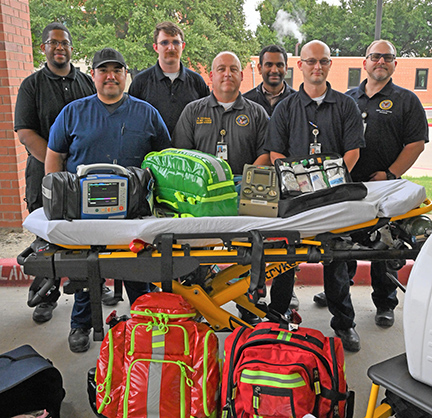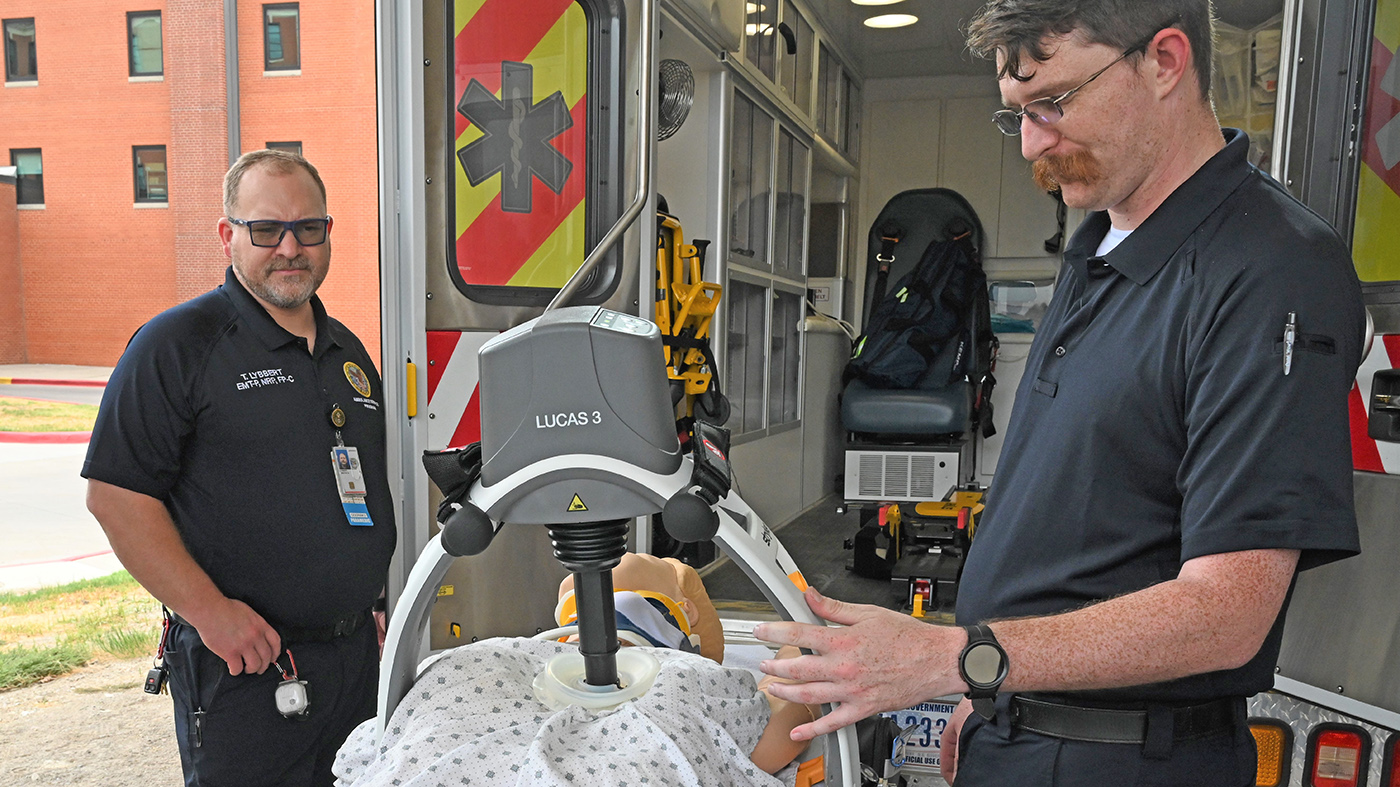Ricki Coleman’s path to standing up North Texas VA’s first ever ambulance transportation team began with tanks. Yes, a 62-ton U.S. Army M1 tank.
Coleman’s journey to a career at VA began as an M1 tank gunner and, after a break in service, continued as part of a Special Operations Command Long Range Scout Surveillance team. With this team he was introduced to emergency medicine through introductory combat lifesaver training and the mentorship of a special forces medic who fueled his desire to apply life-saving techniques to those in need.
It was this exposure that led Coleman to become a volunteer firefighter, earn an EMT certification and ultimately occupy his current key role as an immediate care technician and ambulance supervisor.

“I believe I am here to serve a calling by helping Veterans with compassion, competency and empathy,” he said.
ER treats over 250 Veterans a day
Dallas VA Medical Center is home to a 26-bed emergency medicine department that treats more than 250 Veterans each day. A newly created ambulance transportation team staffed by emergency medical technicians and paramedics is providing services from basic life support to advanced medical care for patients transferring to a higher level of care in the Dallas-Fort Worth area.
Coleman’s efforts in standing up the team at a high-volume medical facility is eliminating the need to wait for previously used contracted transportation services.
“This program is so important for VA and Veteran care,” said Director of Ambulance Services Kevin Patel. “This program and the ambulances are saving precious minutes and lives.”
Real difference is the skill of the team
Ambulances at larger VA medical centers are a common sight, but the level of life-saving equipment available to its immediate care technicians and physicians in North Texas VA rigs is truly impressive. The team’s ambulance is outfitted with state-of-the-art technology that keeps the patients and technicians safe during transport by limiting the amount of effort needed to load the patient and provide care while in transit.
A Stryker Lucas 3 device that performs accurate CPR compressions while EMTs and paramedics perform other lifesaving interventions is a game changer in preserving life. Pictured above, the North Texas VA EMS transportation team trains with the Lucas 3 automated CPR device. “The tools we have are great but the real difference maker is the skill and professionalism of the team,” said Coleman. “Down to a person, we are all passionate about out work with Veterans and train constantly for the worst possible scenarios.”
Topics in this story
More Stories
Study underscores important role COVID vaccination can have in protecting Veterans from infection and reducing long-term health consequences
Columbia VA’s robotic surgery teams completed their 800th robotic surgery and are on schedule to hit 1,000 by the end of the year.
In a decentralized clinical trial, Veterans can participate from their own homes or local VA instead of having to travel to a research site.






